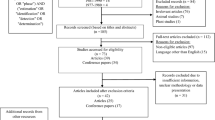Abstract
Measurement of respiratory input mechanical impedance (Zrs) is noninvasive, requires minimal subject cooperation, and contains information related to mechanical lung function. A common approach to measure Zrs is to apply random noise pressure signals at the airway opening, measure the resulting flow variations, and then estimate Zrs using Fast-Fourier Transform (FFT) techniques. The goal of this study was to quantify how several signal processing issues affect the quality of a Zrs spectral estimate when the input pressure sequence is created digitally. Random noise driven pressure and flow time domain data were simulated for three models, which permitted predictions of Zrs characteristics previously reported from 0–4, 4–32, and 4–200 Hz. Then, the quality of the Zrs estimate was evaluated as a function of the number of runs ensemble averaged, windowing, flow signal-to-noise ratio (SNR), and pressure spectral magnitude shape |P(jω)|. For a |P(jω)| with uniform power distribution and a SNR<100, the 0–4 Hz and 4–200 Hz Zrs estimates for 10 runs were poor (minimum coherence γ2<0.75) particularly where Zrs is high. When the SNR>200 and 10 runs were averaged, the minimum γ2 >0.95. However, when |P(jω)| was matched to |Zrs|, γ2 > 0.91 even for 5 runs and a SNR of 20. For data created digitally with equally spaced spectral content, the rectangular window was superior to the Hanning. Finally, coherence alone may not be a reliable measure of Zrs quality because coherence is only an estimate itself. We conclude that an accurate estimate of Zrs is best obtained by matching |P(jω)| to |Zin| (subject and speaker) and using rectangular windowing.
Similar content being viewed by others
References
Bates, J.H.; Decramer, M.; Zin, W.A.; Harf, A.; Milic-Emili, J.; Chang, H.K. Respiratory resistance with histamine challenge by single-breath and forced oscillation methods. J. Appl. Physiol. 61(3):873–880; 1986.
Daróczy, B.; Hantos, Z. An improved forced oscillatory estimation of respiratory impedance. Int. J. Bio-Medical Computing 13:221–235; 1981.
Dorkin, H.L.; Lutchen, K.R.; Jackson, A.C. Human respiratory input impedance from 4–200 Hz: Physiological and modeling considerations. J. Appl. Physiol. 64(2): 823–831; 1988.
Dubois, A.B.; Brody, A.W.; Lewis, D.H.; Burgess, B.F., Jr. Oscillation mechanics of lung and chest in man. J. Appl. Physiol. 8:587–594; 1956.
Eyles, J.G.; Pimmel, R.L.; Fullton, J.M.; Bromberg, P.A. Parameter estimates in a five-element respiratory mechanical model. IEEE Trans. on Biomed. Eng. 29(6):460–463; 1982.
Hantos, Z.; Daróczy, B.; Suki, B.; Galgóczy, G.; Csendes, T. Forced oscillatory impedance of the respiratory system at low frequencies. J. Appl. Physiol. 60(1):123–132; 1986.
Harris, F.J. On the use of windows for harmonic analysis with the discrete Fourier transform. Proc. IEEE 66(1):51–83; 1978.
Kjeldgaard, J.M.; Hyde, R.W.; Speers, D.M.; Reichert, W.W. Frequency dependence of total respiratory resistance in early airway disease. Amer. Review of Resp. Dis. 114:501–508; 1976.
Lutchen, K.R., Jackson, A.C. Reliability of parameter estimates from models applied to respiratory impedance data. J. Appl. Physiol. 62(2):403–413; 1987.
Lutchen, K.R.; Hantos, Z.; Jackson, A.C. Importance of low frequency impedance for reliably quantifying parallel inhomogeneities of respiratory mechanics. IEEE Trans. on Biomed Eng. 35(6):472–481; 1988.
Maki, B.E. Interpretation of the coherence function when using pseudorandom inputs to identify nonlinear systems. IEEE Trans. on Biomed. Eng. 33(8):775–779; 1986, August.
Mead, J. Contribution of compliance of airways to frequency-dependent behavior of lungs. J. Appl. Physiol. 26(5):670–673; 1969.
Michaelson, E.D.; Grassman, E.D.; Peters, W.R.; Pulmonary mechanics by spectral analysis of forced random noise. J. Clin. Invest. 56:1210–1230; 1975.
Nagels, J.; Lándsér, F.J.; Van der Linden, L.; Clement, J.; Van de Woestijne, K.P. Mechanical properties of lungs and chest wall during spontaneous breathing. J. Appl. Physiol: Respirat. Environ. Exercise Physiol. 49(3):408–416; 1980.
Otis, A.B.; McKerrow, B.; Bartlett, R.A.; Mead, J.; McIlroy, M.A.; Selverstone, N.J.; Radford, E.P. Mechanical factors in distribution of pulmonary ventilation. J. Appl. Physiol. 8:427–445; 1956.
Peslin, R.; Duvivier, P.C.; Richalet, J. Frequency response of the chest: Modeling and parameter estimation. J. Appl. Physiol. 39(4):523–534; 1975.
Author information
Authors and Affiliations
Rights and permissions
About this article
Cite this article
Davis, K.A., Lutchen, K.R. Respiratory impedance spectral estimation for digitally created random noise. Ann Biomed Eng 19, 179–195 (1991). https://doi.org/10.1007/BF02368468
Received:
Revised:
Issue Date:
DOI: https://doi.org/10.1007/BF02368468




